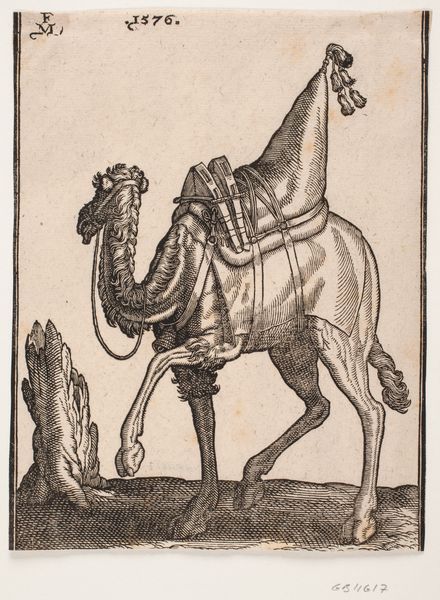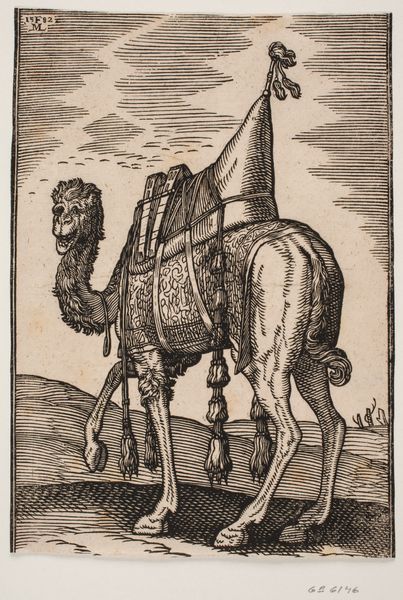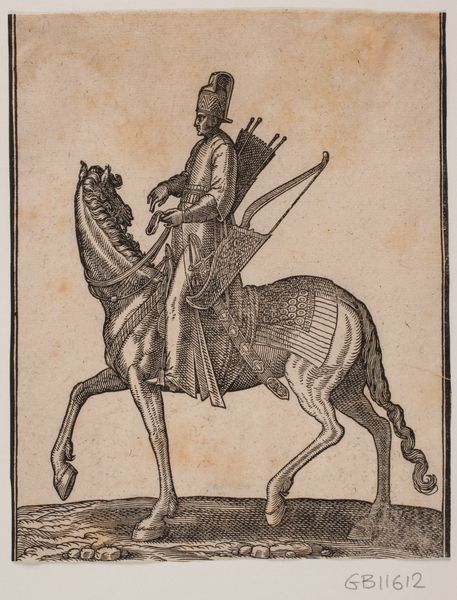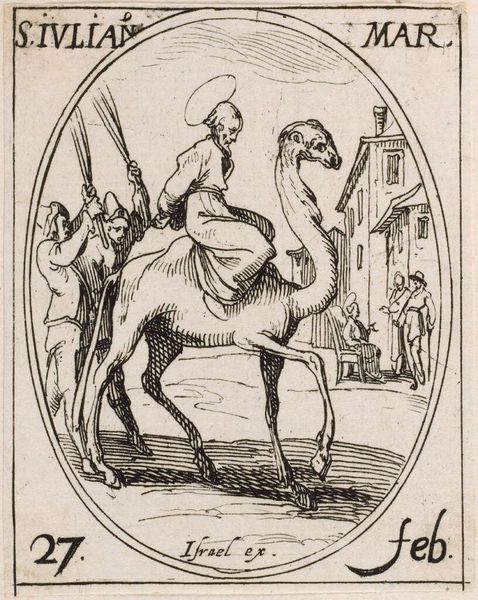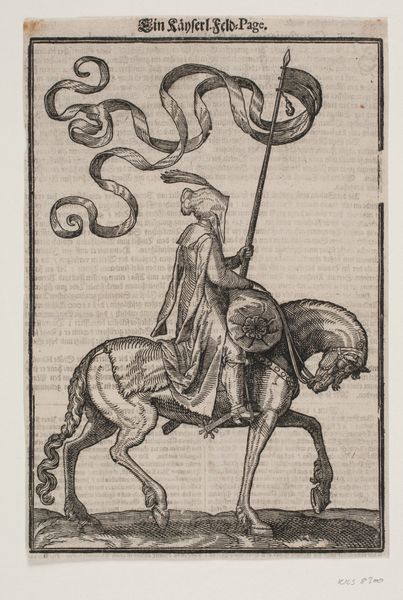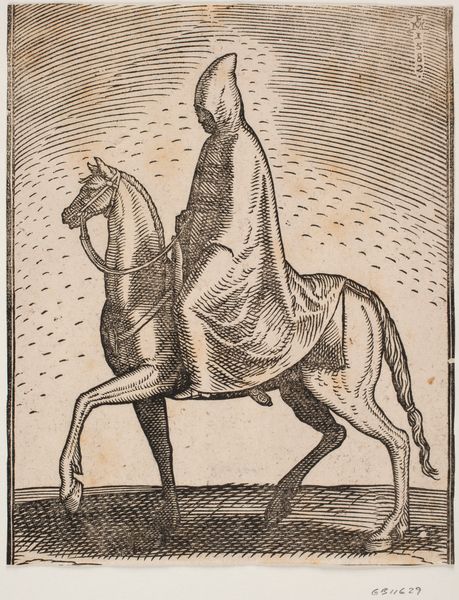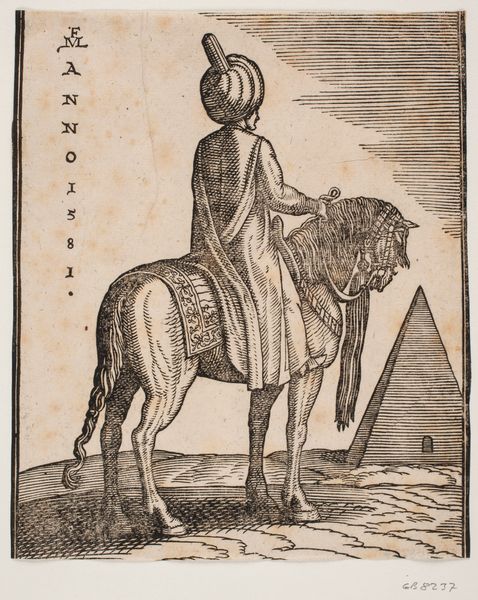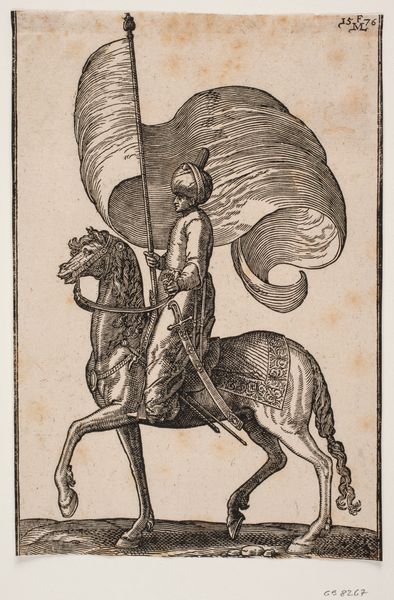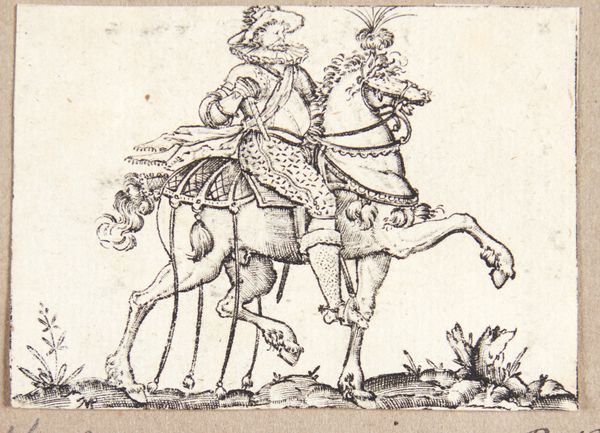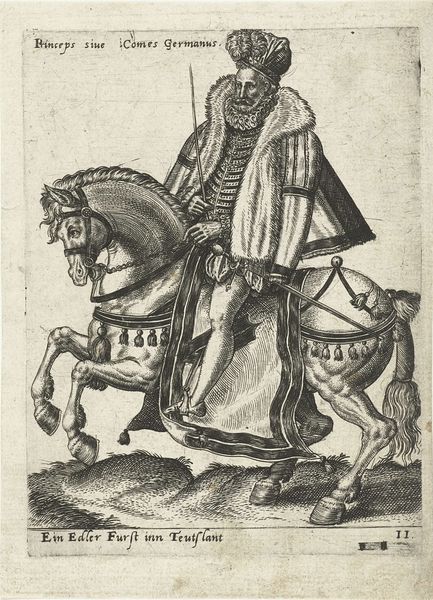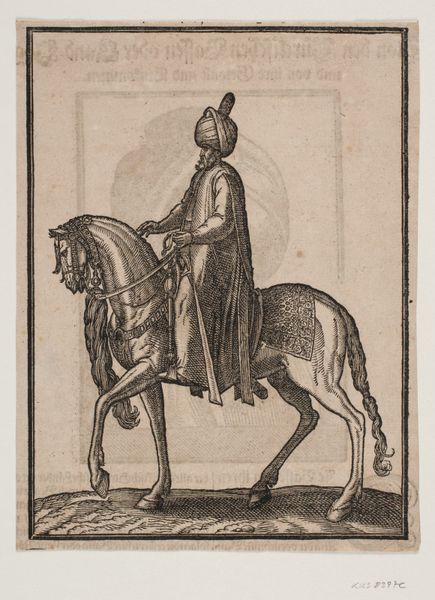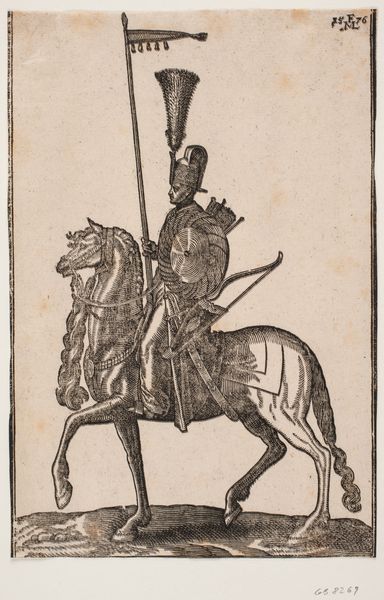
A saddled-up dromedary, profile towards the left, with the animal's head turned away from the wiever 1576
0:00
0:00
print, woodcut
#
narrative-art
# print
#
figuration
#
11_renaissance
#
woodcut
Dimensions: 232 mm (height) x 165 mm (width) (bladmaal)
Curator: Looking at Melchior Lorck’s 1576 woodcut, "A saddled-up dromedary, profile towards the left, with the animal's head turned away from the viewer," the meticulous detail in the camel’s harness really stands out. Editor: Yes, I see what you mean, the craftsmanship in those etched lines is striking! But, overall, there's a peculiar stoicism to this piece. The camel's averted gaze feels burdened, doesn't it? I'm immediately wondering about its social context, perhaps a symbol of coerced labor? Curator: Perhaps, but the medium itself offers so much to analyze. A woodcut of this size, with this level of detail, indicates considerable skill. What about the block itself; where did Lorck acquire it? Who prepared it? Each line is the result of countless hours and expertise. Editor: Agreed. The labor is significant. And in that vein, I'm curious, for whom was this intended? What were the politics surrounding the camel, which certainly held potent symbolism considering expanding European trade routes? Was Lorck consciously engaging in discourses about resource exploitation? Curator: The questions surrounding reception are always thorny, but let's stick with what we can tangibly ascertain. The density of the lines in the camel's hide, the precise angles used to indicate muscle... It all points to a sophisticated understanding of material process. Also, who was accessing exotic animals at the time who wanted this? Editor: Precisely! The details of its saddles speak to human intervention and ownership of animals—highlighting power dynamics. The camel is not merely an exotic animal; it is also a resource. Curator: Definitely. We see these dialogues between craft and class tensions repeated often in this era, which only elevates the skill displayed by artists. Editor: Yes. And for me, this woodcut reminds us that the narratives encoded within artwork are inextricably linked to broader global struggles about labor, exploitation, and our complicated relationships to non-human actors. Curator: Absolutely. It's a piece where the convergence of labor and social statement creates a provocative visual for both artistic and historical investigations. Editor: It definitely provides avenues into art and history that intertwine so vividly here, especially when looked at through those intersecting socio-political lenses.
Comments
No comments
Be the first to comment and join the conversation on the ultimate creative platform.
